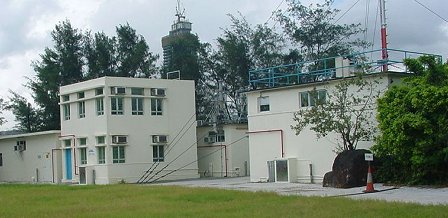The Two Crucial Phases of Environmental Radioactivity Monitoring -- Sampling and Measurement
Extensive Sampling Programme
The Hong Kong Observatory collects samples of all major environmental media, be it from the air (airborne particulates, gaseous iodine, water vapour, total deposition and soil, etc.), or the food chain (meat, vegetables and fruit, etc.), or drinking water, or the sea (seafood, seawater, inter-tidal sediment, etc.). These samples are then measured for their radioactivity in the Radiation Laboratory.
Laboratory measurement
Without exception, measurement of radioactivity in the Observatory's Radiation Laboratory involves detecting the electrical charges produced by the ionizing radiation. 4 major types of equipment (Gamma Spectrometry System, Liquid Scintillation Counting System, Low Level Alpha-Beta Counting System, Alpha Spectrometry System) are used to accurately measure the electrical charges produced by the radiation emitted by radioactive materials present in the environmental samples, thereby deducing quantitatively the amount of radioactivity present.
